Once again I am delighted to welcome historical novelist Lynne Francis to my blog. She is here to talk about the places that inspired The Lost Sister.
 | 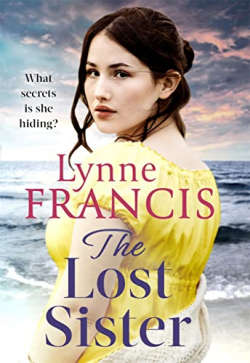 |
Three towns in particular in east Kent play a major part in The Lost Sister, the final part of The Margate Maid trilogy, although a good deal of the story is set on the Woodchurch Manor Estate, a fictional place based on a mixture of Quex House at Birchington and Goodnestone Gardens.
A key town location is the Royal Sea Bathing Hospital, established in Westbrook, now part of Margate. It was designed take advantage of the sea breezes and sea water as an aid to curing scrofula (which we know as tuberculosis) among the patients, who were London’s poor. A charitable institution, and the brainchild of the Quaker Dr Leadsom, it was only open for part of the year due to inclement winter weather. The building still exists, now turned into apartments on a gated site. My discovery of the existence of the hospital provided a key part of the plot – it is where Harriet, one of the leading characters, meets the mysterious Margaret, who is in search of her family.
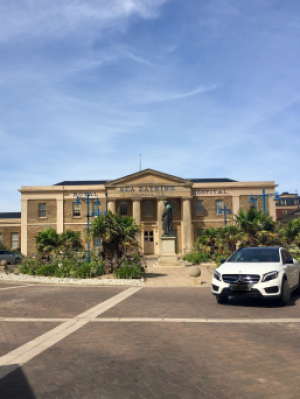
When Molly, the heroine of the previous two books, finds her world turned upside down, she goes to stay in Faversham, walking around the town in an effort to distract herself from her troubles. She uses the ancient Guildhall building in the market place to orient herself in the town.
Molly attempts to resolve a situation with her husband and son, finding them at work in the walled garden. There’s something quite special about this type of garden – the passing through the gate from one realm into another, the vistas beyond. The gate shown here is one of several entrances into the walled garden at Goodnestone. | 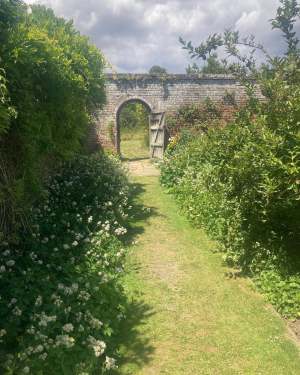 |
The Regency terraces of Ramsgate were newly built when Harriet stays in the town. They were set on a steep hill above the harbour, which was shortly to become the first Royal Harbour, due to the patronage of George IV. In the story, Molly’s daughter, Agnes, is working in the town as an artist for one of the first female architects, Mary Townley. She and her mother dine at a hotel in the town on Nelson Crescent, which overlooks the harbour.
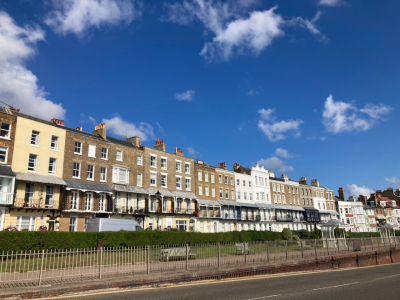 | Nelson Crescent |
Ramsgate Harbour and boats, looking very different to how it would have been then. | 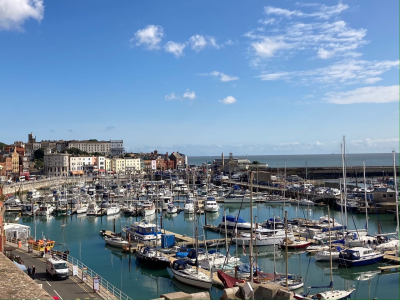 |
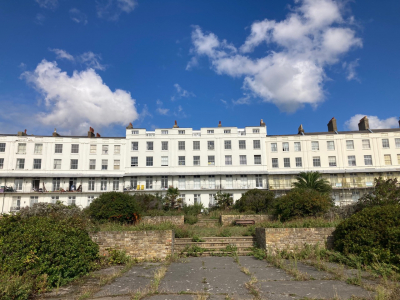 | Grand Georgian terrace with neglected gardens |
| Ramsgate street scene | 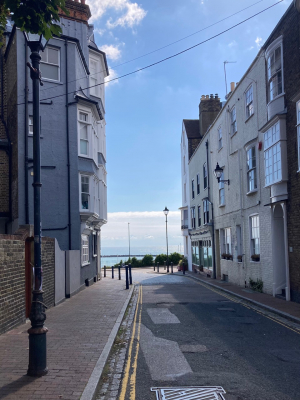 |
You can still find an abundance of Regency terraces in Ramsgate, raised up above the sea to take advantage of the magnificent views, or set back around garden squares. Although neglected over time, recent years have seen a gradual revival in their fortunes. A surprising number are adorned with blue plaques – testament to the artists, authors and many others attracted there in the Regency era and throughout the Victorian period (Queen Victoria herself was a visitor as a young princess.) The harbour, filled with boats today, would have looked quite different in Georgian times.
I was drawn back to Ramsgate as the setting for part of the second book in a new series. The first book, The Smuggler’s Secret, is out in February 2023.
* * * *
To visit Lynne's author page on Amazon, click here.
Lynne's latest book is The Smuggler's Secret.
A sweeping saga of friendship, betrayal and finding love in the unlikeliest places. 1813. Haunted by her father's death and tired of watching her mother struggle, Meg Marsh will do anything to keep a roof over her family's head. Even if that means getting involved in a dangerous smuggling operation.
You can find it on Amazon by cicking here.
|  |


Make A Comment
Comments (0)